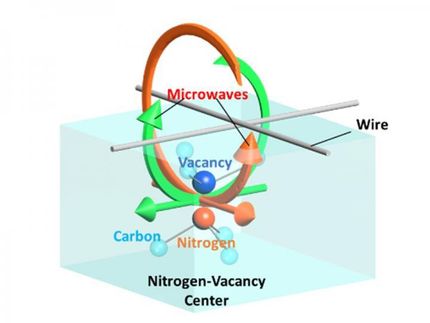Improved Stability of Electron Spins in Qubits
The basic idea of a quantum computer is to replace the ones and zeros used in today’s bits with quantum states, or qubits. Qubits can, for example, be implemented using the spins of individual electrons held in nanoscale structures made of semiconducting material, known as quantum dots. By exploiting quantum-mechanical principles such as superposition, a quantum computer can achieve enormous processing speeds – but only if the electron spins persist for long enough.
In recent years, it has been possible to extend this so-called coherence time to over a millisecond, thanks to the successful reduction of interference caused by nuclear spins. Thus, the search for other factors that affect the stability of the electron spins increased in importance.
Discovery of electron exchange
Physicists at the University of Basel and the Swiss Nanoscience Institute have now established that qubits’ coherence is limited by a process in which individual electrons are exchanged between a quantum dot and an external reservoir. The reservoir represents a type of electrode that is in contact with the quantum dot and is required for the measurements.
The researchers, led by Professor Dominik Zumbühl, observed that thermal excitation prompts an electron to jump from the quantum dot into the reservoir, and that shortly thereafter an electron jumps from the reservoir into the quantum dot.
This exchange creates a short-lived charge state, which the researchers in Basel have now been able to demonstrate for the first time with a charge sensor. The exchange process also leads to a randomizing of the electron spins, through which quantum information is lost.
Fundamental process for coherence
Based on the experimental observations, the researchers were able to significantly extend the existing theoretical description of double quantum dots, which can contain two electrons. They also succeeded in influencing the intensity of the temperature-dependent exchange process by cooling the electrons down to 60 millikelvins. At the same time, the process was slowed and the stability of the spins prolonged by changing the voltages at the entrances, or gates, to the quantum dot.
An understanding and control of this exchange process, which is fundamental to quantum dots, paves the way for further progress in qubit coherence. At the same time, it opens the way to a quick generation of desired spin states in quantum dots.
Original publication
Other news from the department science

Get the chemical industry in your inbox
By submitting this form you agree that LUMITOS AG will send you the newsletter(s) selected above by email. Your data will not be passed on to third parties. Your data will be stored and processed in accordance with our data protection regulations. LUMITOS may contact you by email for the purpose of advertising or market and opinion surveys. You can revoke your consent at any time without giving reasons to LUMITOS AG, Ernst-Augustin-Str. 2, 12489 Berlin, Germany or by e-mail at revoke@lumitos.com with effect for the future. In addition, each email contains a link to unsubscribe from the corresponding newsletter.



























































